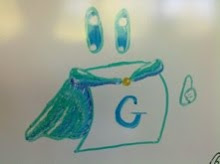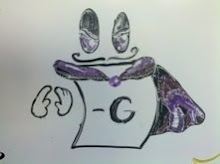(The CGT sessions were only held on the first day, so this is as far as my notes go.)
In the afternoon sessions, I spoke first about placement games on graphs, some variants that could be applied to all of them, and the computational complexity of the resulting games (of which very little is known).
Rebecca Milley went next, and this was the first time I'd ever heard an academic talk about Bowling Kayles! She introduced a partisan version: Left knocks down 1 pin and Right knocks down 2 neighboring pins. Rebecca the misere expert naturally considered that angle: who wins under misere play? (I don't remember if the normal play version is solved. It seems like it wouldn't be hard to show that Left always wins if there are any pins.)
Misere games don't have additive inverses, because addition doesn't follow happy group rules. Specifically, you can have games G and H (G's "inverse") where G + H = 0, but G and H's conjugate don't have the same outcome class when you start adding them to other positions. (I don't recall how to derive the conjugate; I should learn that!) In normal play, G+H = 0 means that G = -H, but that's not always the case in misere-land.
Rebecca's Partisan Kayles demonstrates positions with this inequivalence of conjugates and inverses. Consider a single pin (I'll denote this with a capital 'I') added to two single pins (II). The sum (I + II) is equal to zero. (Playing optimally, both players will get a move, so the first player will win (misere).) Thus, these two act like inverses. They don't, however, act like conjugates. So far, Partisan Kayles is the only known ruleset to fail this misere inverse property!
Richard rounded out the session, speaking more about work with Urban Larsson and Carlos Santos on scoring games. He introduced DisKonnect, a scoring version of Konane. (You keep track of the number of pieces you have taken.) He also considered a method of embedding normal play games into scoring games: just play the game, but at the end, consider the score to be zero. (I like this!)
Unfortunately, some scoring game positions can't be used to embed normal play games. The resulting collection of scoring games that can be used, dubbed "guaranteed games", is a well-defined category. Rulesets here include things such as Blokus, Mancala, and Dots-and-Boxes.
***
As you can see, there are tons of holes in my "reporting" of these talks. There is much for me to still learn, and many aspects of this field I may never gain a mastery of. CGT is growing quickly: Misere and Scoring play are taking off, and there are still lots of unanswered questions and lots of new rulesets people are thinking of. It is definitely a cool time to be a gamester.
Jokes from the Audience
3 days ago


